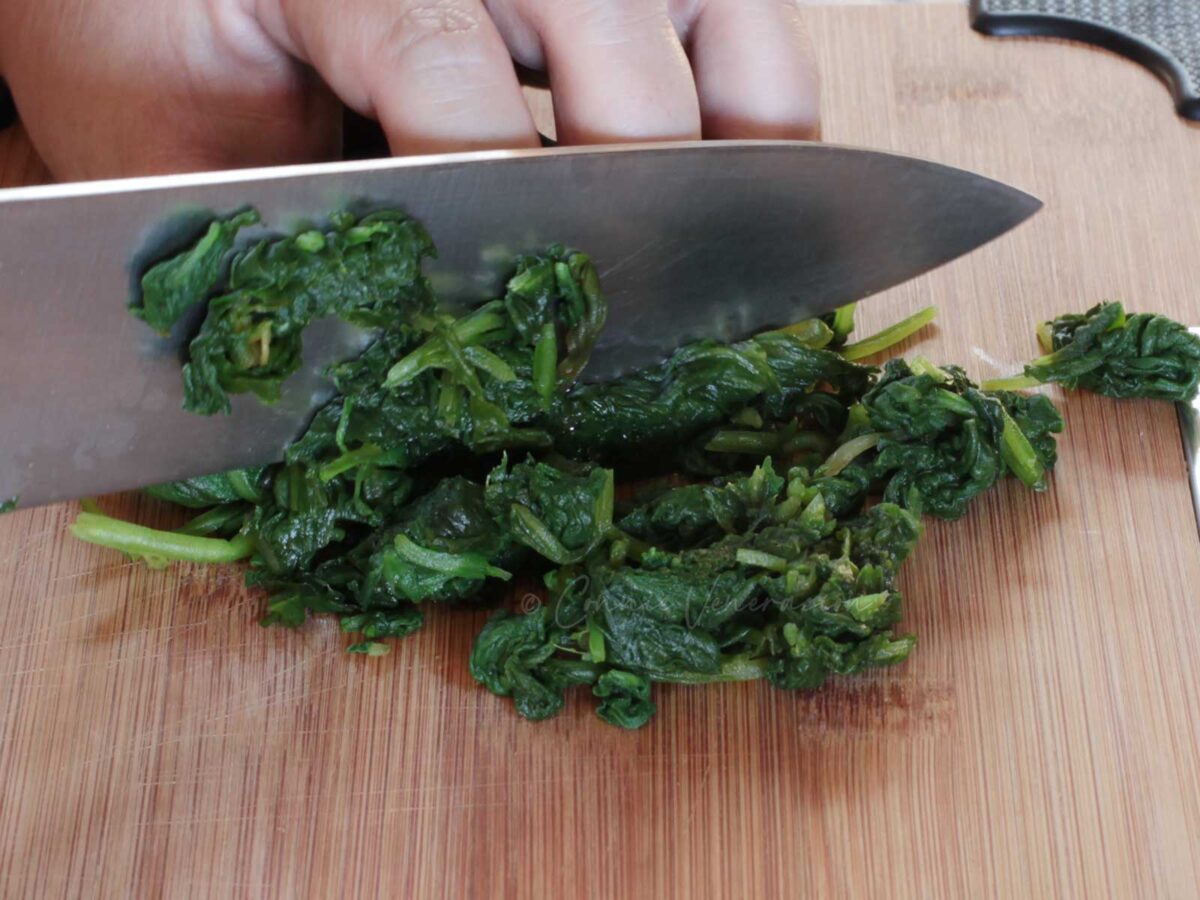You must have come across recipes that include blanched spinach among the ingredients. Or spinach is listed and accompanied by instructions on how to blanch.
Why blanch spinach?
Spinach has high water content. Blanching allows you remove as much of that water as you possibly can. There are two advantages. One has to do with storage; the other has to do with preventing your dish from turning watery or soggy.
For safer and better storage
According to an article published by the College of Agriculture, Forestry and Life Sciences of Clemson University, blanching spinach before freezing removes surface dirt and microorganisms and “stops enzyme actions which otherwise cause loss of flavor, color and texture.”
But if not storing spinach in the freezer, why does it have to be blanched? Why not cook spinach directly like any other leafy vegetable?
For better-cooked dishes
Well, you could cook spinach without blanching. If you’re making soup, for instance, it would be quite unnecessary to blanch the spinach before stirring it into the broth. But if you need to cook the spinach minus the water it contains — if that excess water will result in a less appetizing dish — then, you blanch first.
How to blanch spinach

Drop spinach into a pot of boiling water, leave for a minute (that’s long enough to wilt the leaves and soften the stalks, if any) then drain. Just enough so that you can press down the spinach and they will still all be covered by water.
Alternatively, spread the spinach in a steamer basket and steam over briskly boiling water.

Cool the drained spinach thoroughly either by dumping into a bowl of iced water or by leaving the greens in the strainer and placing under the tap until the leaves are cool.

The wilted leaves are now soft enoughto squeeze with your hands to remove excess water. If you want to be even more thorough, place the drained and cooled spinach on a piece of muslin or cheesecloth, gather the edges and squeeze.










